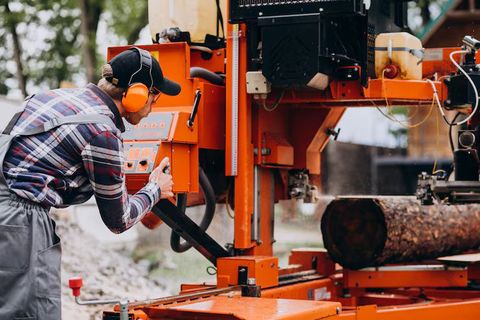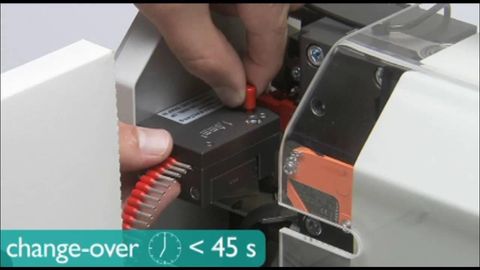Wire Crimping Machines Explained: Learn the Basics, Process, and Essential Knowledge
Wire crimping is the process of joining a conductor (wire) to a terminal or connector by deforming the connector around the wire. This forms a cold-compression joint that ensures both mechanical stability and good electrical conductivity.
A wire crimping machine performs this deformation automatically or semi-automatically, depending on the setup. These machines exist because industries require consistent, reliable, and efficient connections that can withstand vibration, temperature changes, and wear. Manual crimping can be inconsistent and time-consuming, while machines guarantee repeatable, high-quality results—especially critical in automotive, aerospace, and electronics manufacturing.
Importance – Why it matters today, who it affects, and what problems it solves
Wire crimping machines are vital in today’s industrial and electrical manufacturing landscape for several key reasons:
-
Safety and reliability: A properly crimped terminal ensures minimal resistance, stable mechanical holding strength, and reduced risk of electrical failure. Poor crimps can cause overheating, corrosion, or intermittent faults.
-
Efficiency and productivity: Machines handle large volumes of crimps rapidly, helping companies achieve high output with uniform quality.
-
Quality assurance: Modern crimping machines can monitor crimp force, height, and other variables in real time, improving consistency and reducing defects.
-
Industry relevance: Wire harness manufacturers, electrical engineers, and assembly technicians all depend on reliable crimping equipment for building safe and durable systems.
-
Problem solving: These machines address the issue of unreliable electrical joints, reducing rework, minimizing scrap, and improving long-term product performance.
As industries like electric vehicles, renewable energy, and smart electronics expand, the need for precision wire connections has made crimping machines increasingly essential.
Recent Updates – Changes, trends, or news from the past year
The wire crimping machine sector has evolved significantly in the past year:
-
Automation and smart features: Many new models introduced in 2025 now include sensors, IoT connectivity, and data tracking for real-time monitoring and predictive maintenance.
-
Market growth: Analysts project the global wire crimping machine market to grow steadily through 2033 due to rising demand in automotive wiring and electronics manufacturing.
-
AI integration: Artificial intelligence is being applied to detect crimp defects automatically and adjust process parameters dynamically for improved precision.
-
Energy-efficient designs: Manufacturers are focusing on energy-efficient drives and lightweight components to align with sustainability goals.
-
Rising Indian manufacturing focus: India’s rapid growth in electronics and vehicle component production has increased demand for automated wire crimping solutions to meet export and quality standards.
These updates reflect a strong shift toward smart manufacturing and digital transformation in the crimping process.
Laws or Policies – How this topic is affected by rules, regulations, or government programmes in India
Wire crimping machines, as part of industrial electrical equipment, must comply with several regulations and safety standards:
-
Machine safety and conformity: Under the Omnibus Technical Regulation (OTR) Order 2024, machinery and electrical equipment in India must meet prescribed Indian Standards and undergo conformity assessment by the Bureau of Indian Standards (BIS).
-
Electrical safety standards: Industrial users must ensure all electrical machines are installed and maintained according to the Indian Electricity Rules, ensuring proper grounding, insulation, and overload protection.
-
Crimping quality standards: International standards such as IEC 61238 and SAE specifications define acceptable parameters for crimp joints. Adhering to these ensures safe and reliable electrical connections.
-
Government manufacturing initiatives: India’s “Make in India” and Production-Linked Incentive (PLI) schemes encourage local manufacturing of components and machinery, indirectly supporting the adoption of advanced crimping systems.
Compliance with these rules helps industries maintain safety, reliability, and regulatory approval across production environments.
Tools and Resources – Helpful tools, apps, websites, templates, or services
Professionals working with wire crimping machines can use several tools and resources for better understanding and control:
-
Quality Crimping Guides: Technical handbooks explaining how to select terminals, wires, and tools, and how to measure crimp quality.
-
Inspection Checklists: Step-by-step visual aids for verifying parameters like conductor visibility, bell-mouth formation, and crimp height.
-
Wire Gauge Calculators: Online references for matching wire size (AWG/mm²) to terminal and die specifications.
-
Monitoring Software: Some machine manufacturers provide software dashboards to monitor crimping force and record production data.
-
Industry Standards Documents: IEC and ISO guidelines on mechanical and electrical connector performance for maintaining compliance.
-
Training Modules: Many technical institutes and manufacturers provide free or open training resources on proper crimping methods and inspection procedures.
These resources help engineers, supervisors, and operators ensure that every crimp connection meets required technical and safety standards.
FAQs – Frequently Asked Questions
Q1: What’s the difference between manual and automatic crimping?
Manual crimping uses handheld tools operated by technicians, which depend heavily on operator skill. Automatic or semi-automatic crimping machines perform the same function using programmable settings and controlled pressure, improving speed and uniformity—ideal for mass production.
Q2: What are the most important parameters for a good crimp connection?
Critical parameters include correct terminal and wire pairing, appropriate stripped wire length, correct crimp height, absence of damaged strands, and secure conductor insertion. Visual inspection and measurement ensure compliance with defined quality standards.
Q3: Are there standards for wire crimping in India?
While there is no India-specific crimping code, industries typically follow IEC 61238 and SAE standards. Additionally, Indian electrical safety and machinery regulations ensure compliance with BIS and OTR 2024 guidelines for equipment operation.
Q4: What are current trends in wire crimping technology?
Automation, AI-based defect detection, energy-efficient motors, and data-driven maintenance are dominant trends. Machines now integrate with Industry 4.0 systems for real-time process tracking and quality reporting.
Q5: What safety measures are important when using wire crimping machines?
Operators should use protective gloves and eyewear, ensure the machine is properly grounded, regularly inspect tooling for wear, and follow lock-out procedures during maintenance. Preventive checks help avoid electrical or mechanical hazards.
Conclusion
Wire crimping machines are a cornerstone of modern electrical and electronic manufacturing. They exist to provide consistent, durable, and safe wire-to-terminal connections that support everything from vehicles to appliances and industrial control systems.
In recent years, these machines have become smarter and more efficient, integrating automation, digital monitoring, and sustainable design. As regulatory requirements tighten and production volumes rise, industries are relying more on precision crimping to guarantee safety and reliability.
By understanding the basics, staying updated with trends and regulations, and using available technical resources, professionals can ensure the crimping process remains efficient, compliant, and dependable for the future of manufacturing.





